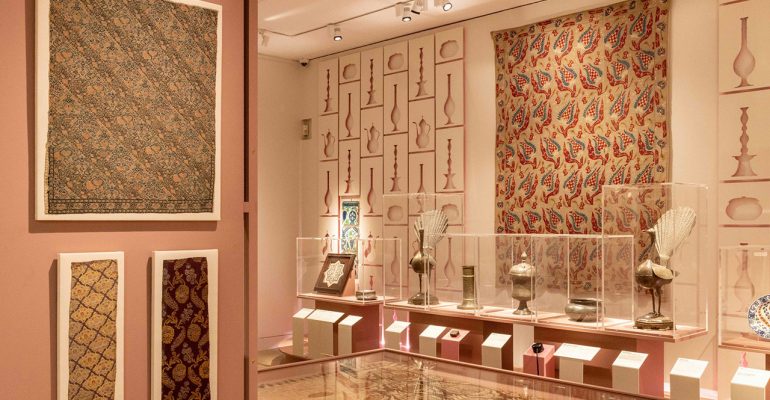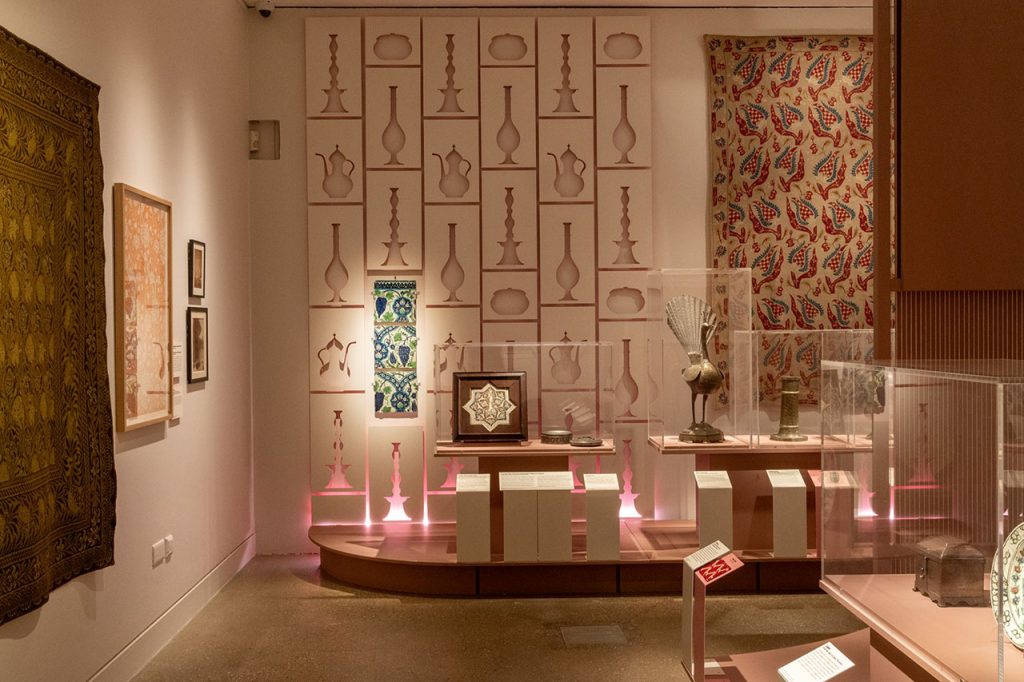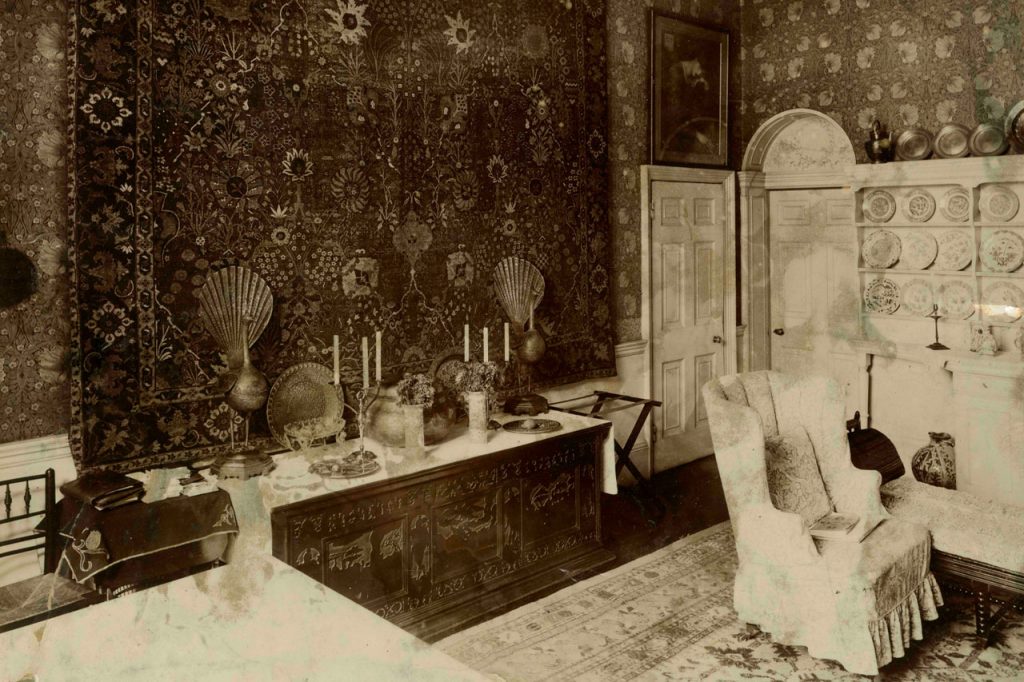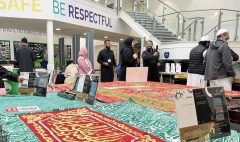Islamic art and the sumptuous Victorian designs of William Morris
November 11, 2024 2025-01-26 15:54Islamic art and the sumptuous Victorian designs of William Morris

Islamic art and the sumptuous Victorian designs of William Morris
A new London exhibition brings items from the artist’s personal collection together with the work they inspired
For the first time, an extensive collection of artefacts from the Islamic world amassed by the acclaimed designer and leading figure of the Arts and Crafts movement William Morris is on public display. The exhibition, held at the William Morris Gallery in east London, opened on 9 November and will run until 9 March 2025.
In 1879, at the height of his career, Morris delivered a lecture to the Trades Guild of Learning at the Co-operative Institute in central London, in which he stated: “To us pattern designers, Persia has become holy land, for there in the process of time our art was perfected, and thence above all places it spread to cover for a while the world, east and west.”
However, according to the exhibition’s co-curator Rowan Bain, the influence of Persian and Ottoman art – particularly rug weaving and decorative tiling – on Morris’s own work has been largely ignored by scholars.

“Morris is one of these people who had written a lot about his politics, his poetry, and so on, so it did feel strange that this aspect of his work had not been fully explored, given the wealth of knowledge about Morris,” she says.
“A lot of the study has been from the perspective of 19th-century art history. So people may not have had the kind of expertise or interest in Islamic art to look at Morris through this lens.”
The new exhibition, which is accompanied by an illustrated book titled Tulips and Peacocks, examines the powerful influence of Islamic art on the designer and the broader Arts and Crafts Movement.
It also brings items from Morris’s private collection, which have long been dispersed across numerous institutions, together for the first time in more than a century. Examples include a 17th-century illuminated manuscript of the Iranian epic poem Shahnameh, 16th-century Ottoman tile panels from Iznik and Damascus, and two 13th-century star tiles from the Emamzadeh Yahya shrine in Iran, the tomb of a sixth-generation descendant of the prophet Muhammad’s grandson, Hasan ibn Ali.

Despite his interest in Iranian and Ottoman design, Morris never travelled east of Italy and built his collection with the help of European art and antique dealers.
“He would have purchased these items from Paris or London. In 19th-century London there was a big influx of art works from Iran and from the fading Ottoman Empire,” says Qaisra M Khan, also a co-curator of the exhibition. “This was driven by a lack of controls on the export of items and a real interest in the region, particularly among academics.”
That lack of protection meant that throughout the 19th century, some historical and religious sites were almost completely stripped of their riches, including the precious lustre tilework from Emamzadeh Yahya, which began to appear in European capitals and private collections such as Morris’s.
Morris decorated his Hammersmith home, Kelmscott House, with many of his collected artefacts. Much of his dining room ceiling and wall was covered by a spectacular 17th century Iranian carpet, which at more than 15 square meters was too large to include in the exhibition and can be seen on permanent display at the V&A.

Morris hand wrote and illuminated a copy of Robert FitzGerald’s English translation of The Rubáiyát by the 11th-century Iranian poet, Omar Khayyám, which is on display. He worked on the project, which took over a year to complete, with his friends the Pre-Raphaelite artists Edward Burne-Jones and Charles Fairfax Murray.
Bain also sees evidence of Turkish influence in Morris’s famous Medway indigo design which features a wild tulip, a motif that can be seen in many of his textiles.
“The tulip has a very strong resonance with Turkey and Ottoman design,” Bain says.
Ottoman influences are also present in the woven silks produced at Morris & Co’s Merton Abbey factory in Surrey during the latter part of the designer’s career. Bain points to Granada, his first attempt at producing velvet brocade using metallic thread, as an example.
![]slamic art and the sumptuous Victorian designs of William Morris](https://iric.org/wp-content/uploads/2024/11/20241121-Islamic-art-and-the-sumptuous-Victorian-designs-of-William-Morris-04-1024x682.jpg)
“It’s always been understood that he was informed by Italian velvets,” she says. “But now we know that he also owned Ottoman velvets and by looking at these we can begin to understand other influences on Morris’ production.”
Among the Ottoman covers and throws on display is a 17th-century velvet hanging from Bursa, Turkey, which was used to cover Morris’s coffin at his funeral in 1896. Now owned by the Birmingham Museums Trust, this is the first time that the piece has been on public view.
“Morris is always seen as this kind of quintessentially British designer who is looking to flora and fauna in the British countryside, which is very much true,” says Bain. “But he had a very extensive understanding of textiles and design practice from different regions across the world. We hope this exhibition will broaden our understanding of this.”
William Morris & Art from the Islamic World runs until 9 March 2025 at the William Morris Gallery. Entry is free.
Source: Hyphen







